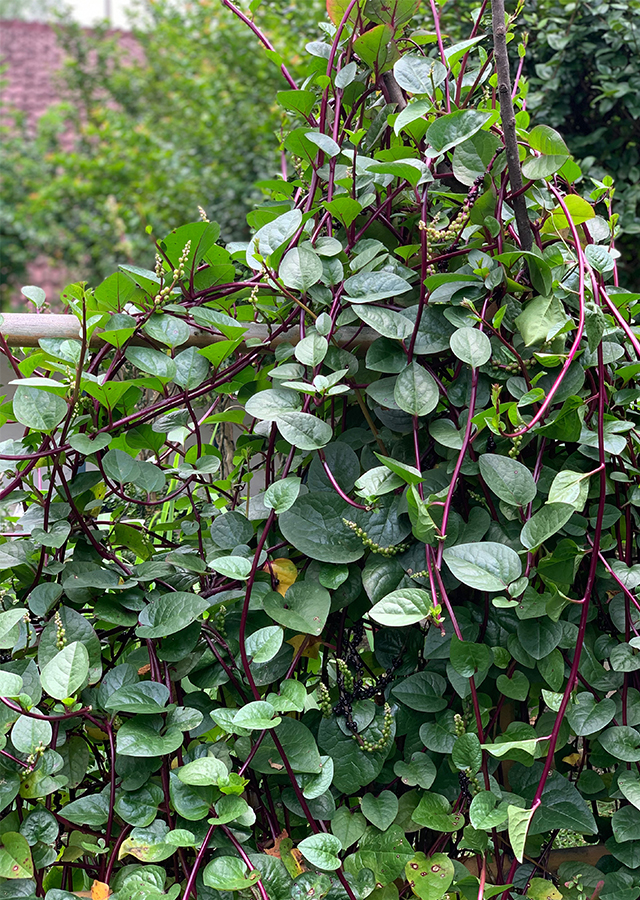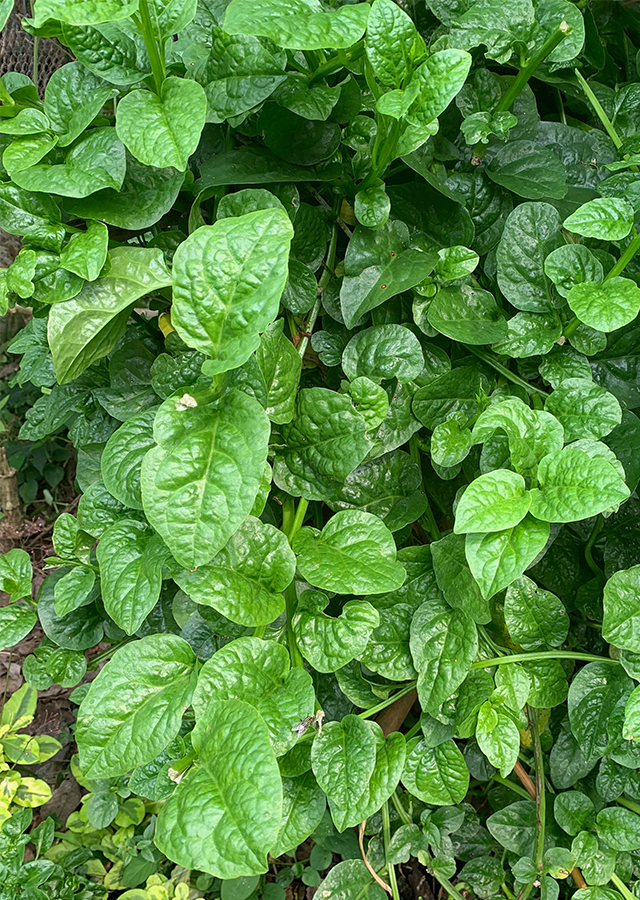Traditional Herbs from Basella alba
radang_intestinal_buntu
- Wash thoroughly 70 g of all parts of the plant, cut into small pieces then boil in 1 glass of water until remaining \u00bd glass. Cool then strain.
- Drink 1 time a day.
measles": ["Prepare 30 g of fresh gendola, wash until clean.\u00a0
What is Basella alba Looks like??



Parts of Basella alba that could be used
- All Parts of the Plant
Basella alba Distribution
This plant is native to Southeast Asia, possibly originating from the tropical Monsoon Malabar Coast of India, Sri Lanka and Papua New Guinea. There are 2 types of gendola or Malabar spinach, namely green Malabar and red Malabar. Has efficacy as a traditional medicine. The leaves can be consumed as a vegetable. In Nepal, amaranth sap is used as a coloring agent for glue and candy.Agroecology of Basella alba
Grows optimally in sandy loam textured soil, has organic matter, pH 5.5-8, likes hot and humid climates. Low temperatures slow growth and produce small leaves. Shade affects the width of the leaves to be larger than plants grown in full sun. Lighting <13 hours stimulates flowering.
Morphology of Basella alba
- Taproot, dirty white.
- Thick, soft succulent stem. Basella alba has greenish stems, while Basella rubra is purplish red.
- Heart-shaped leaves, thick, wrinkled, juicy, soft, green or purple , short-stemmed.
- Compound flowers, spike-shaped, located in the leaf axils.
- Buni fruit is fleshy, ovate, green when young and purple when ripe.
Cultivation of Basella alba
- Propagation via seeds and stem cuttings.
- Seeds are sown first, transplanted to the plot once they have 4 leaves.
Basella alba, more details :
Chemical Content of Basella albaSaponins, riboflavin, niacin, thiamin, flavonoids, hydroxy-benzoic acid, hydroxycinnamic acid phenols carotenoids, antioxidant pigments (ß-carotene, lutein and zeaxanthin), syringic, ferulic acid, betacyanin, gomphrenin.
Benefits of Basella alba
Medicine for colds, appendicitis, delays premature aging (antiaging), antioxidant, antimicrobial, lowers cholesterol, diabetes, reduces cardiovascular disease (heart), treats anemia (iron producer), and measles.
Simplisia of Basella alba
- Choose fresh gendola leaves. Clean them of any dirt stuck to them. Wash them then drain them.
- Slice the leaves and place them on a container then dry them in the sun and cover them with a dark colored thin cloth.
- After they are dry, put them in a clean, covered plastic bag tight or airtight.
Another Facts for Basella alba :
Synonym of Basella albaBasella cananifolia Buch.-Ham. ex Wall., Basella cordifolia Lam., Basella crassifolia Salisb.
Habitus of Basella alba
Herb. Annual climbing plant, reaching 10 m in length
Habitat of Basella alba
- Riverside
- Forest
- Bush Area
No comments:
Post a Comment